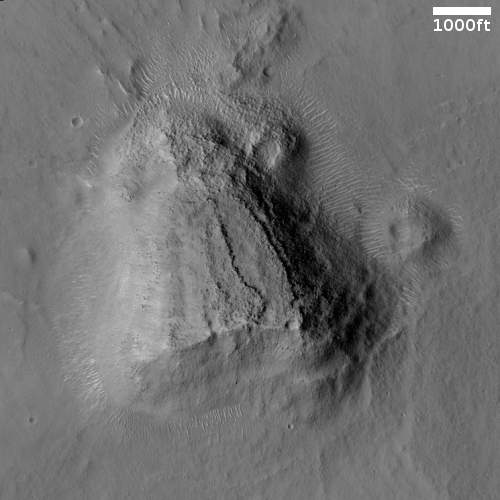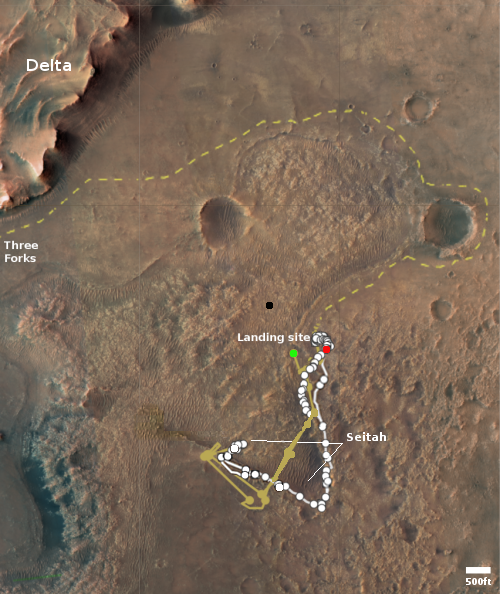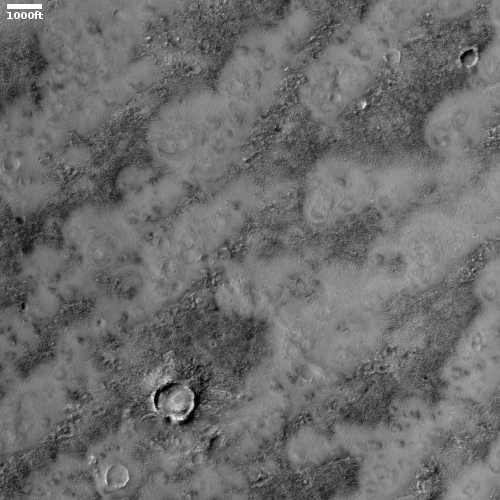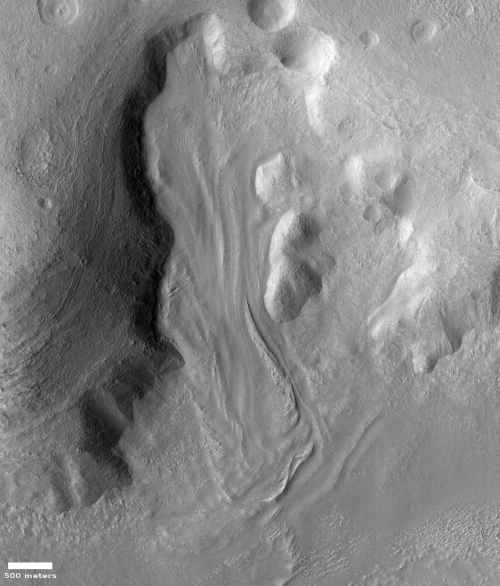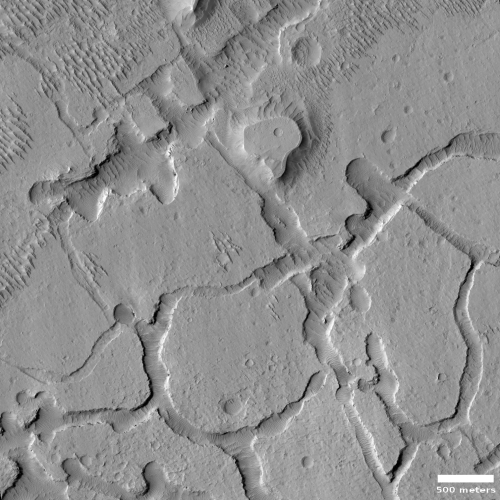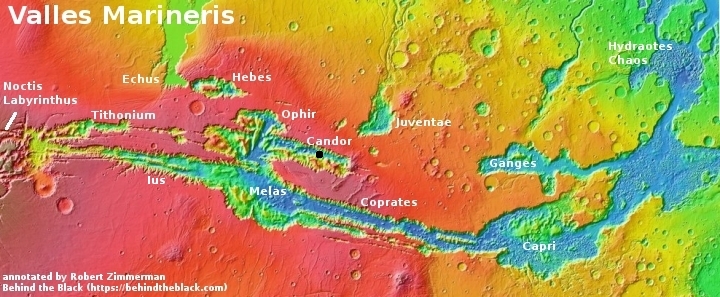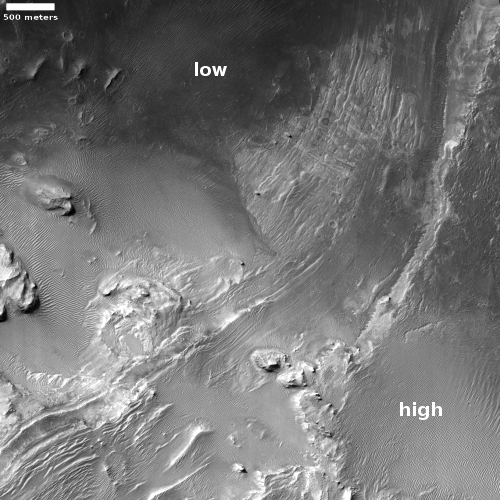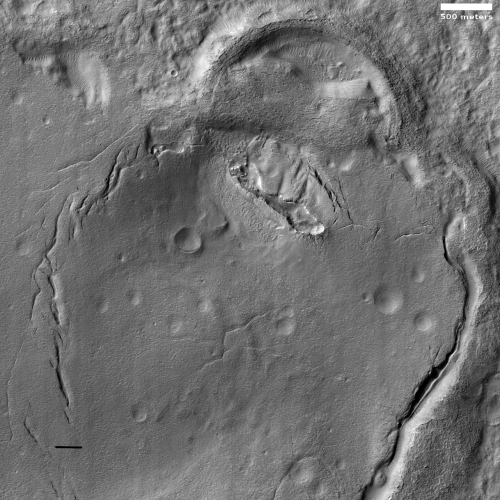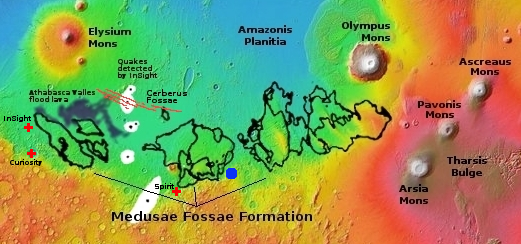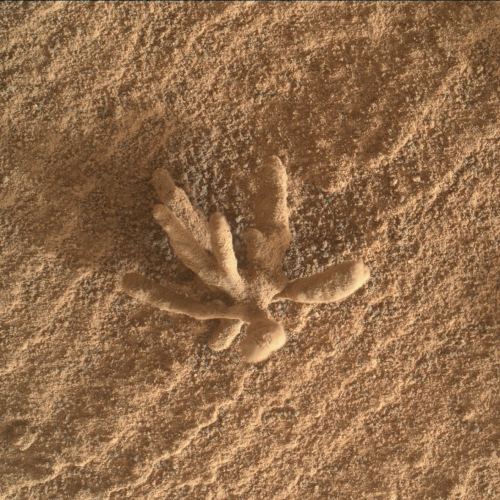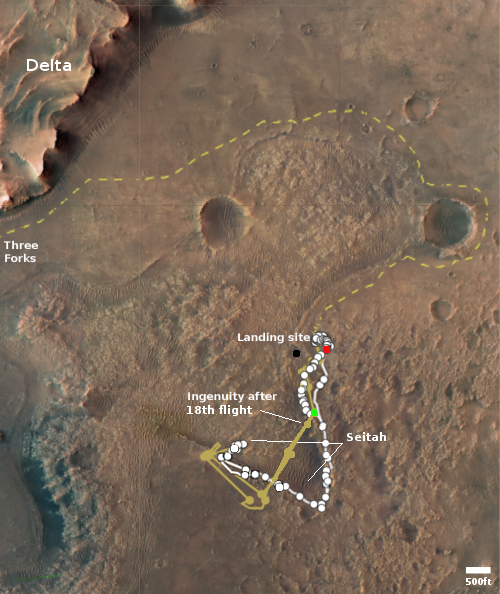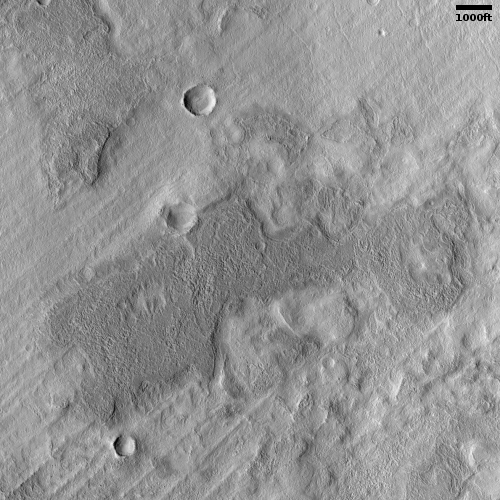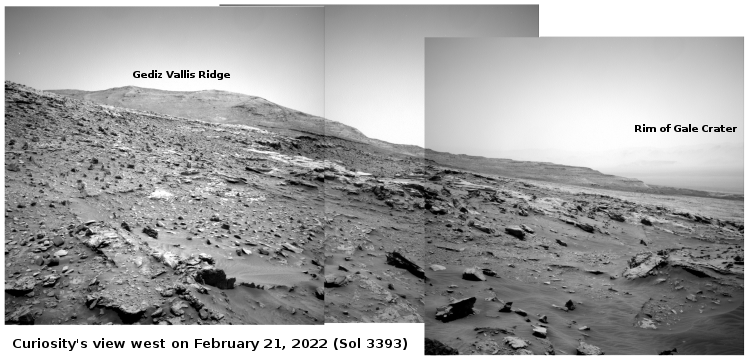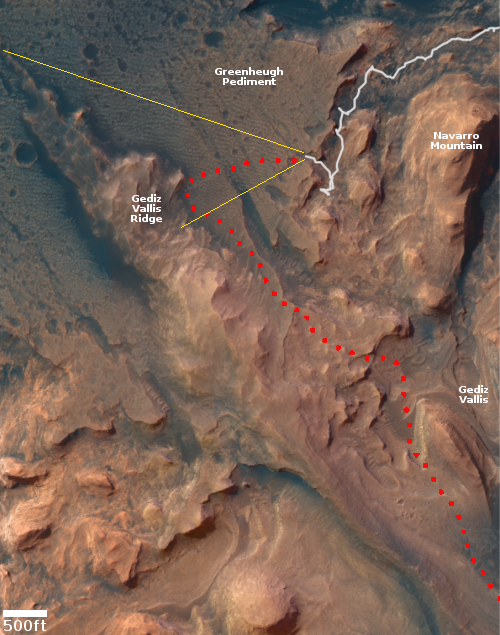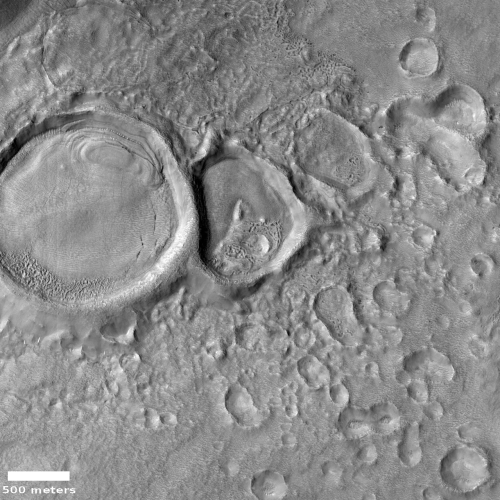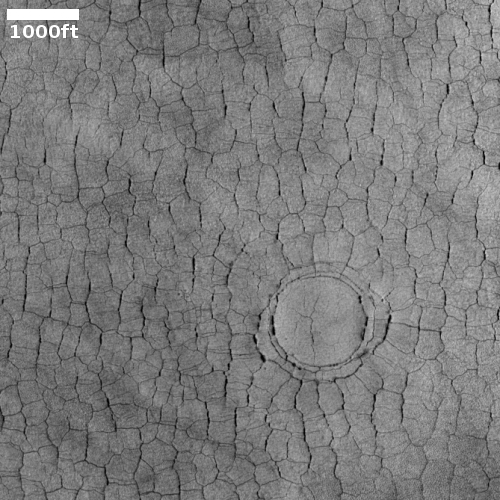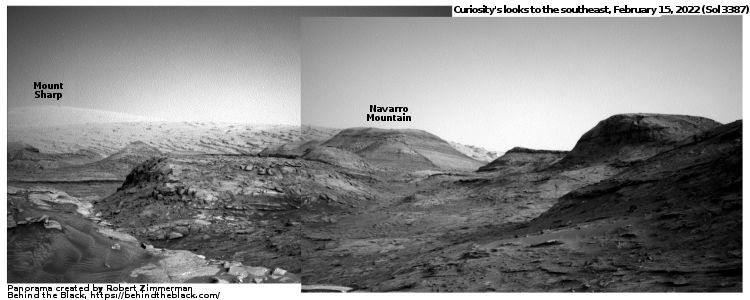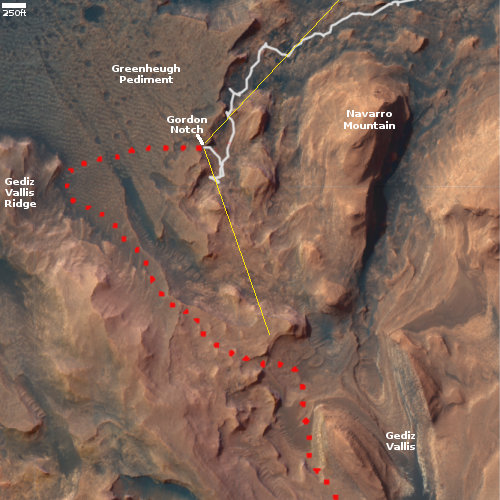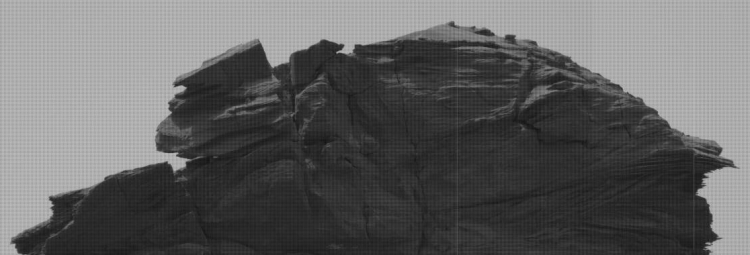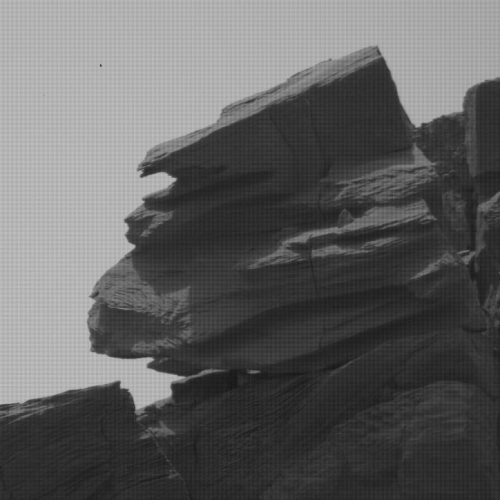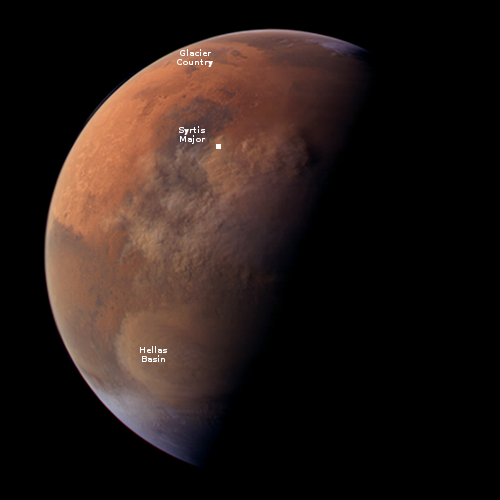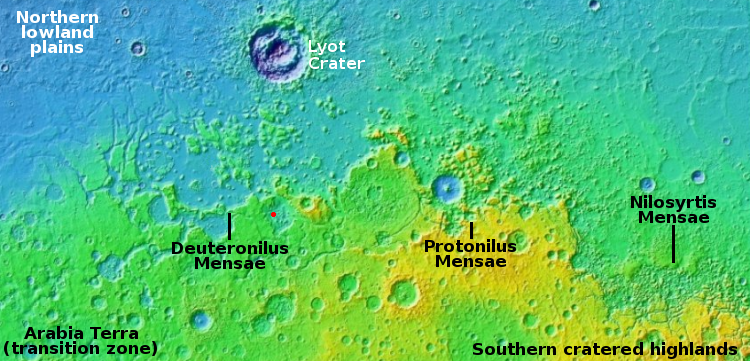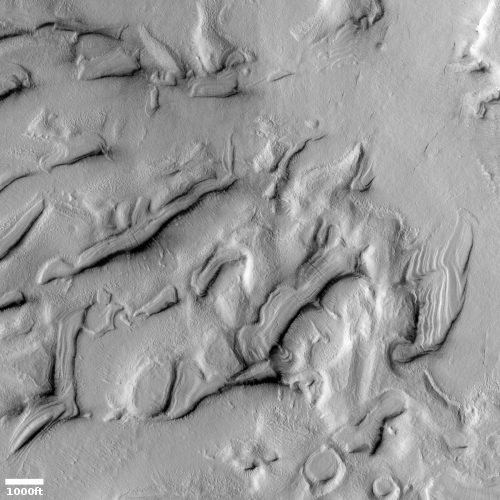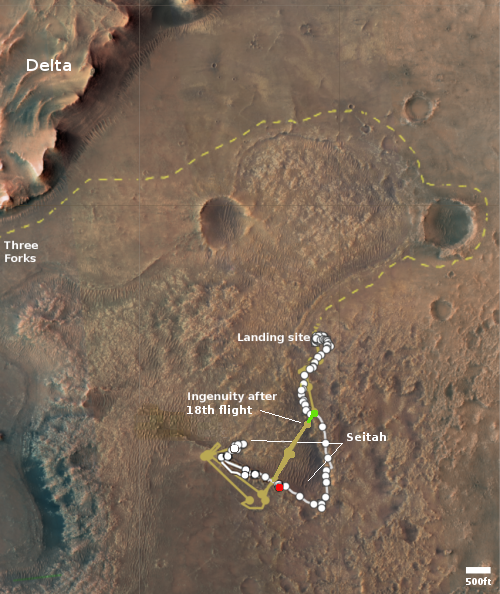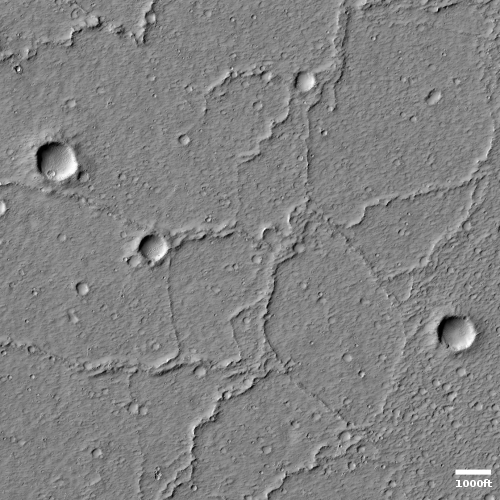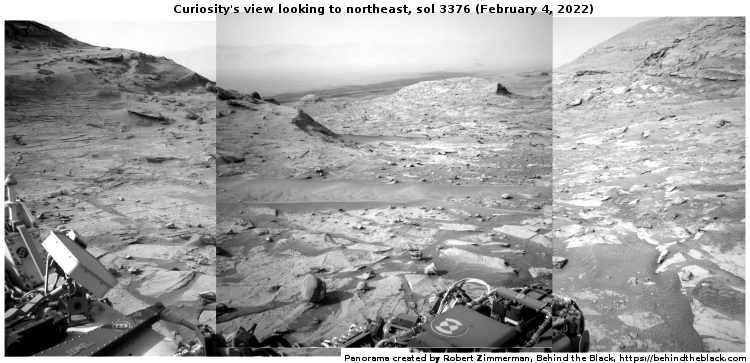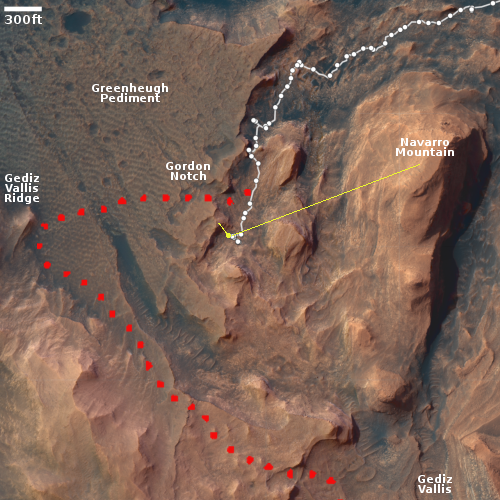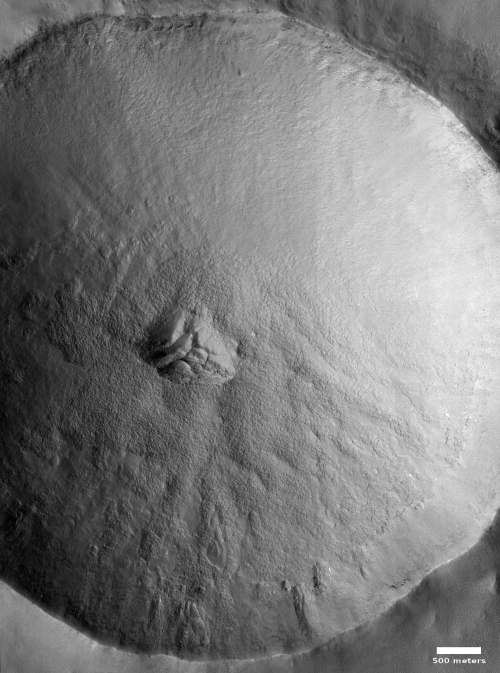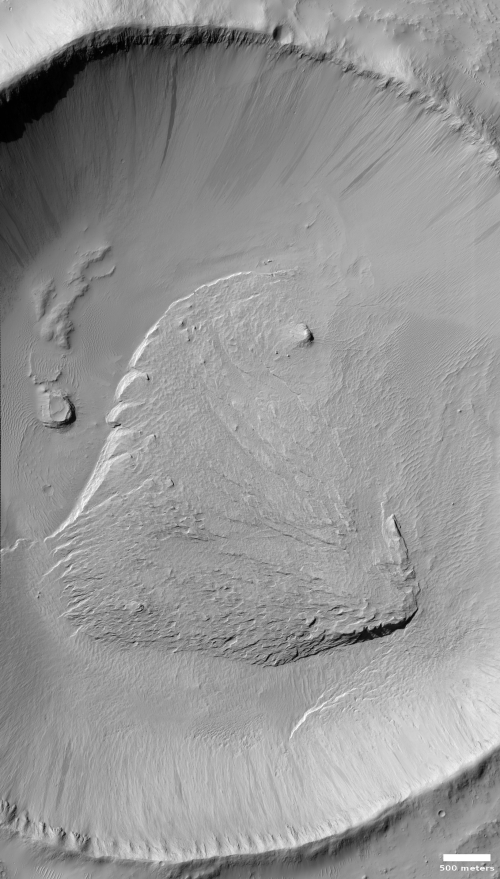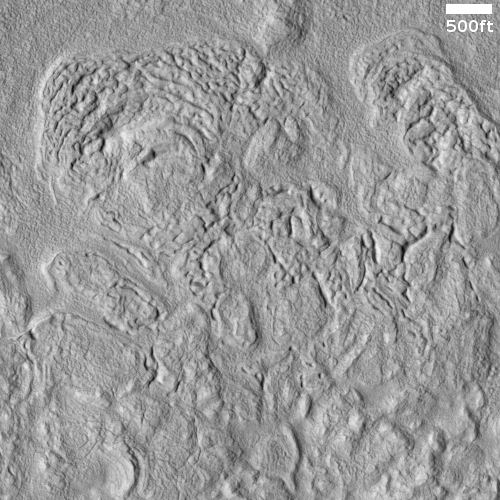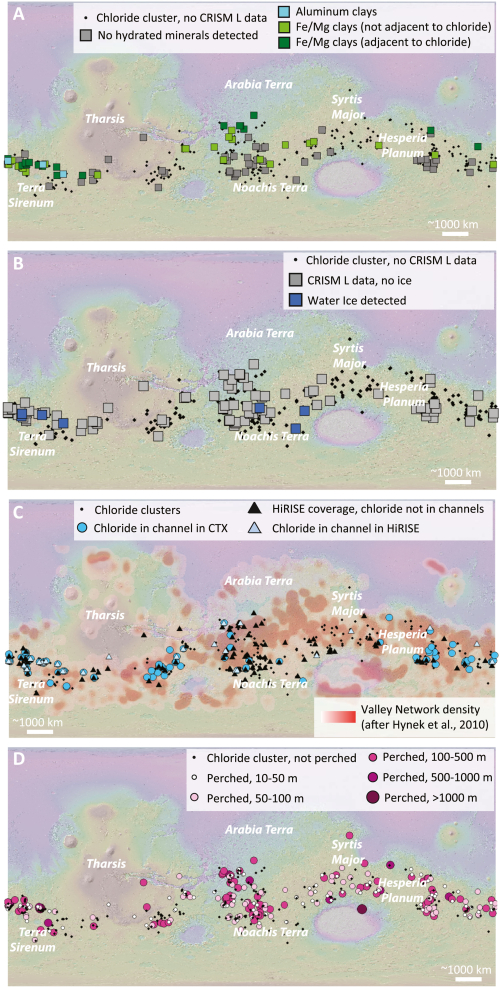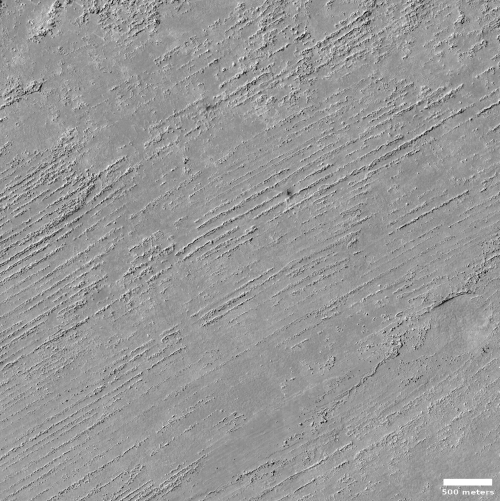Mesa in the Martian northern lowlands
Cool image time! The photo to the right, cropped and reduced to post here, was taken on February 2, 2022 by the high resolution camera on Mars Reconnaissance Orbiter (MRO) and shows a mesa sticking up on the relatively flat and featureless northern lowland plains in Utopia Planitia, the second largest impact basin on Mars.
The full image shows three such mesas. Though pictures taken in the northern lowlands of Utopia tend to show evidence of buried ice or glaciers, the impression I get from this picture is one of dryness. If there is any ice here, it is below ground. And even that seems unlikely. The surface surrounding nearby craters does not have that squishy and slushy look that is seen in the north when an impact occurred on near surface ice. Instead, the ground looks solid.
The overview map below reinforces this impression.
» Read more
Cool image time! The photo to the right, cropped and reduced to post here, was taken on February 2, 2022 by the high resolution camera on Mars Reconnaissance Orbiter (MRO) and shows a mesa sticking up on the relatively flat and featureless northern lowland plains in Utopia Planitia, the second largest impact basin on Mars.
The full image shows three such mesas. Though pictures taken in the northern lowlands of Utopia tend to show evidence of buried ice or glaciers, the impression I get from this picture is one of dryness. If there is any ice here, it is below ground. And even that seems unlikely. The surface surrounding nearby craters does not have that squishy and slushy look that is seen in the north when an impact occurred on near surface ice. Instead, the ground looks solid.
The overview map below reinforces this impression.
» Read more

